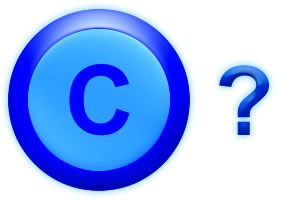I often get asked “What should I invent”, by budding inventors or those who feel the need to invent something, but are not sure exactly what. And that’s a really good place to start. Inventing is not always about waking up in the middle of the night (or not being able to fall asleep) with a “Eureka” moment. Sometimes it takes a bit more of a methodical approach.
Here’s a few tips on discovering what you should invent.
1. What Do I Know A Lot About?
This is a good place to start. Ask yourself this question. And I promise you, you know a lot about something that most people don’t. Often, the best ideas and inventions come from those with “insider information”. Your in-depth knowledge about a specific topic or industry gives you a wealth of information that other people lack.
Exercise 1
Get a pen, or open up Evernote, and write down areas that you have some knowledge about. I suggest you do it right now to keep the momentum going. Choose about 3 subjects that you know a lot about and write them as headings.
2. What Can Be Improved?
Did you know that most inventions are improvements upon previous inventions? Very few inventions are radically new, they are often minor (or major) improvements in what’s come before. We’re going to continue the exercise above with a way to improve upon what already exists.
Say you know a lot about sports. This means you probably know a lot about what sports equipment works, what doesn’t, what training techniques or props are useful, and what could really be a good invention in this field. You’ll know what tweaks or modifications are needed to existing products that could make them work that much better.
Exercise 2
So under the headings you created in the step above, write down 5 things that need fixing in the area. Just write whatever comes to mind, even if it seems ridiculous when you’re thinking about it. If you have more than 5, keep going. There’s absolutely no limit.
You may even start to see some kind of pattern or connection in the items you are writing about. They could all be leading to something that makes a task more efficient, or saves money, or makes it easier or quicker to do something. This means you are on the right track.
3. Keep Writing
So the exercise that we did above was a way to get the juices flowing. However, to keep the juices flowing, without you even being aware of it, I would strongly suggest keeping a journal. Get yourself a small journal, one that you could carry around with you, or use the notepad on your mobile phone. Write down whatever ideas come to mind wherever you are. If you are the supermarket and think about a new food combination, write it down. If you are watching your kid’s baseball game and think about a new kind of training product, write it down.
The more you write, the more ideas of what to invent will flow.
Exercise 3
This exercise gets you to start thinking visually. Select a few items you wrote in exercise 2 and try and sketch them. You don’t need to be a good drawer, you just need to start thinking about them in a visual way. I’m sure you were thinking of them in your mind’s eye while writing them. As you draw, you’ll notice that new improvements or ideas start flowing. It’s really powerful.
4. Keep Your Eyes Open
Ok, so if you’ve done some of the exercises above, and continue keeping a journal in order to write and draw your inspirations and ideas, you’ll notice that ideas of what you should invent should start flowing.
Exercise 4
This one is just about keeping your eyes open. When you’re taking a walk, observe how people go about their day. At the office, see what tasks cause the biggest headaches or get the most complaints. Read the newspaper and see what the current trends or issues are.
I hope that the exercises and processes I’ve spoken about above gives you some starting points on answering that most important question, “What should I invent”!


 Creating a new invention can take lots of time and money. So, for most inventors finding away to commercialize their invention is very important. Commercialization will allow you to recoup the money you spent developing the invention and to be rewarded financially for your innovation.
Creating a new invention can take lots of time and money. So, for most inventors finding away to commercialize their invention is very important. Commercialization will allow you to recoup the money you spent developing the invention and to be rewarded financially for your innovation.
 In this article we talk about how to copyright an idea. Have you a written a new ebook that you would like to distribute or a new song that you would like to publish? Do you have an idea for a movie script that you would like to shop around? Have you developed a new app for smart-phones that you would like to sell online?
In this article we talk about how to copyright an idea. Have you a written a new ebook that you would like to distribute or a new song that you would like to publish? Do you have an idea for a movie script that you would like to shop around? Have you developed a new app for smart-phones that you would like to sell online?


 Got it (seriously you need to get it and do this right now). This is your canvas. Now write down 5 fields or areas that interest you. You can be quite general for the moment. Golf, football, cooking, anything that comes to mind.
Got it (seriously you need to get it and do this right now). This is your canvas. Now write down 5 fields or areas that interest you. You can be quite general for the moment. Golf, football, cooking, anything that comes to mind. I want you to look over that list, and seize upon one of the keywords that gives you the most excitement. You should actually feel this excitement as you look at it.
I want you to look over that list, and seize upon one of the keywords that gives you the most excitement. You should actually feel this excitement as you look at it.


 This is really the crux of the entire how to invent something process. How can you improve upon what you have just sketched?
This is really the crux of the entire how to invent something process. How can you improve upon what you have just sketched?
 You have the great idea. It may not change the entire world (although it might) but it will definitely change your world by bringing something into the world that wasn’t there before, or that truly is the better mousetrap.
You have the great idea. It may not change the entire world (although it might) but it will definitely change your world by bringing something into the world that wasn’t there before, or that truly is the better mousetrap.